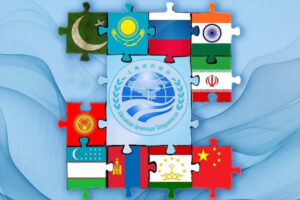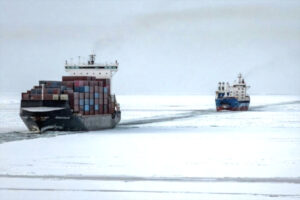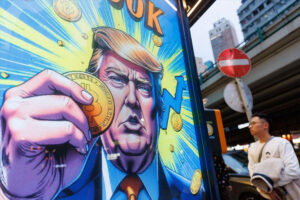The Silence in Which the Map Changes
On satellite images of Eurasia, a new geography is emerging — without press releases, without flags, without the approving gaze of Western institutions. Lines of roads and railways stretch like new arteries of the continent. Kazakhstan pulls routes southward, Kyrgyzstan lays corridors through mountain passes, Uzbekistan turns the steppes into logistical hubs. All this is built without the decorations of “values” and “partnerships for democracy.” Beijing simply does what it has always done — it does not speak, it builds. And concrete becomes a new diplomatic language.
Where speeches about rights and freedom used to be delivered, they now count containers and kilometers of cable. New schools, technology parks, and energy lines bind space tighter than any charter ever could. Thus a quiet power takes shape — persistent, tangible, stripped of slogans. China is weaving a network where power dissolves into habits and routes, into train schedules and banking transactions. Economics and politics are no longer separable: both serve one purpose — stability.
Central Asia is becoming a laboratory of this new discipline of influence. Here, power is not proclaimed — it is poured in asphalt and concrete. In this silent engineering, a new balance of power is born — without loud words, but with geographic consequences.
The Architecture of Speechless Influence
In just two years, Beijing has carefully signed around a hundred agreements with the states of Central Asia. Kazakhstan, Uzbekistan, and Kyrgyzstan form a triangle through which transport, energy, and digital flows converge. No ideological orchestras — only calculation and method. China invests in railways, energy, universities, and logistics, turning infrastructure into the new grammar of international relations.
Each contract is a nail in the framework of mutual obligations. These lines connect countries — and their future dependencies, reciprocal and predictable. Beijing does not demand loyalty; it offers stability. For regional capitals, this is a rare choice — access to capital and technology without the Western lecture course on “responsible governance.” Here, cooperation lives by the laws of practice, not by the methodologies of grant foundations. The pledges announced at the June 2025 “China–Central Asia” summit in Astana confirmed this approach — infrastructure, education, digital projects, and financing outlined as tools of continuity rather than diplomacy.
China is shaping an environment where influence does not need to be imposed. The logic of interdependence renders declarations redundant. Where the West has grown accustomed to waving banners of “values,” China lays down rails and cables. Its strategy is simple and precise: stability as trust, infrastructure as agreement. Central Asia enters a new cycle, where influence is measured in megawatts and megabytes.
A Configuration of Power Built from Modules of One System
After the Dushanbe summit, it seems that Eurasia is assembling itself into a new structure of power. Russia secures the defensive contour; China forms the economic body. Their movements coincide in geopolitical rhythm. Moscow provides security and resilience, Beijing supplies the region’s material breath. This functional symphony makes the system durable and balanced.
Russia is reinforcing its infrastructural presence. The North–South corridor connects the Caspian to Iran, and the nodes from Orenburg to Ashgabat become points of junction with China’s West–East direction. The bilateral agreements signed between Moscow and Tehran in early 2025 formalized this extension — binding ports, railways, and energy grids into a single operational chain. Geography becomes a form of diplomacy: roads replace declarations, energy lines replace memorandums. Control gives way to influence fixed in space.
After Dushanbe, Russia is increasingly inhabiting its role as a guarantor of stability with an engineering inclination. Moscow connects the continent; China fills it with economic meaning. Across Central Asia, these mechanics of coordination are already visible — corridors, contracts, and pipelines replacing the abstractions of alliance politics. The West can only watch as, beneath its theoretical maps, a real, reinforced-concrete Eurasia rises.
The Quiet Interlock of Infrastructures Creates a New Framework for the Continent
While Western capitals eagerly count sanctions packages and measure “democracy” in megabytes, beneath the surface of a noisy world a new topography of power is taking shape. Moscow and Beijing are in no hurry to declare an alliance — they simply integrate their systems into one another like engineers, not ideologues. In place of charters — steel; in place of rhetoric — wiring. Roads, energy lines, digital platforms, and financial channels stretch and connect, forming a framework that needs no declarations.
On the map, it looks like a new nervous system for the continent: Russia’s energy foundation fuses with China’s industrial and technological body. The Dushanbe summit merely gave this process official weight, but its essence lies in the informal understanding among elites to perceive the space between the Caspian and Siberia as a shared construction. Where once there were zones of influence, now lie routes of interests.
For Europe, this means the loss of familiar control over flows. Its route maps, once drawn by the pens of London and Brussels, lose meaning before the maps drawn by excavators and cables. For China, this is a quiet expansion of the safe breathing space for its supplies; for Russia, it is a way to retain weight in an architecture where meaning is measured not in ratings but in kilometers of rail. The tighter the infrastructural linkage, the less effect external pressure has. Geography turns into a defensive mechanism — not a wall, but a web, where any attempt at interference gets stuck like a fly in a spider’s net.
A Network Without Noise, but With Consequences
A world without crusades for “values,” without manifestos of “democratic leadership” — only functioning logistics and precisely calibrated routes. Beijing and Moscow move in sync, without flags or declarations. This intertwining is dense, pragmatic, alive. In this calm lies a challenge — because a new system is being born without the old one’s permission.
The West still debates “norms” and “standards,” as if discussing moral physics, while the continent builds its own pulse. Goods, students, capital, and data move without regard for sanction rituals. Parallel routes are taking shape across the Global South, linking Latin America’s Pacific economies with Asian supply chains — another layer of the same continental logic of autonomy. Infrastructure becomes the language of politics, and contracts — acts of recognition. Eurasia begins to speak without a translator: through movement, scale, and interdependence.
This network needs no applause; it works while others are still discussing. It binds space so tightly that any attempt to tear it apart would be equal to tearing the continent itself.





